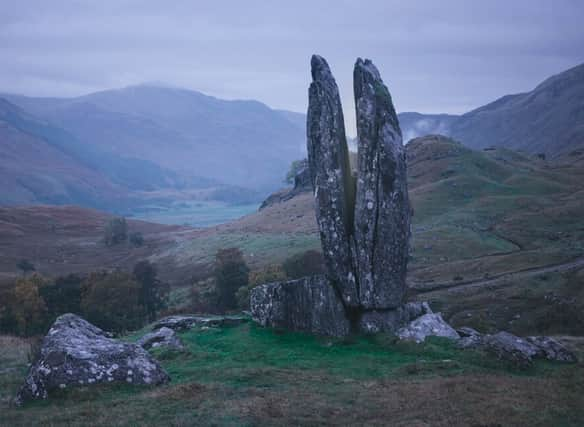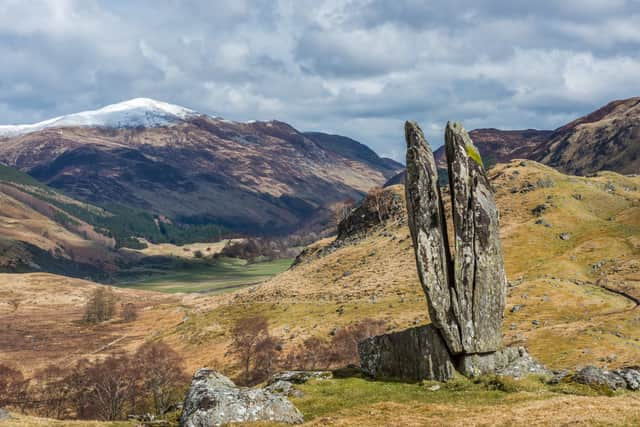Praying Hands of Mary: A fabled rock in Scotland’s “longest, loneliest and loveliest” glen


Scotland is blessed with an abundance of incredible glens but Sir Walter Scott was not exaggerating when he dubbed Glen Lyon the “longest, loneliest and loveliest” of them all. While the latter two points are up for debate, it can indeed be declared the longest enclosed glen in Scotland as it stretches out over 51 kilometres.
Regarding its status as the loneliest, The Courier reported last year: “Apart from a few scattered farms and cottages, the only real settlements are at Fortingall and Bridge of Balgie, which, by the way, boasts a fantastic tea room – the cakes are to die for.”
Advertisement
Hide AdAdvertisement
Hide AdThat only leaves the loveliest claim which - in a country with award-winning natural scenery and UNESCO world heritage sites - is sure to be hotly contended but fascinating sites within Glen Lyon like the Praying Hands of Mary certainly add weight to Scott’s position.
Following a challenging ascent up Gleinn Da-Eigg from Balmenoch, hillwalkers - no doubt huffing and puffing afterwards - are rewarded with this striking rock formation which consists of two stones that resemble praying hands.
Also known as Fionn’s Rock, this peculiar location takes your mind back into Scotland’s Celtic heritage and folklore as it is said the rock was split by an arrow fired by Fionn Mac Cumhaill i.e., the legendary Scottish warrior Fingal.
Here is an overview of this remarkable Scottish location including its history, folklore and how you can get there.
What are the Praying Hands of Mary?
According to Hidden Scotland: “The ‘Praying Hands of Mary’, also known as Fionn’s Rock, is a mysterious rock formation in Glen Lyon. It consists of two large stones that rise together as if they were hands praying.”
The upright structure is thought by some to be a glacial erratic stone that was placed where it is today during the Ice Age but the placement of it being highly precise leads many to doubt the theory.
Standing stones can be found all over Scotland and these date back to as far as the Neolithic period (making some around 5000 years old) which is why many believe the Praying Hands of Mary were human-raised.


Why is the location so named?
The Christian association of the site has been connected to St Adamnan; a 7th century saint who worked under St Columba at Iona.
Advertisement
Hide AdAdvertisement
Hide AdAccording to Walk Highlands: “His bell has been dated to 800 AD and apparently lay in the churchyard of St Brandon’s Chapel in Glen Lyon for centuries before being rescued.
“St Adamnan travelled here from Iona, setting up Christian cells on ancient pagan sites of worship.”
They continue: “Given that St Adamnan, like other travelling priests, would have set up Christian cells on ancient pagan sites of worship it’s perhaps not surprising that pagan Glen Lyon was a target for the early Christian missionaries.”
The alternative name, Fionn’s Rock, is derived from the legendary Celtic hero Fingal who is said to have split the stone in half by firing a ‘supernaturally’ powerful arrow.
Oxford Reference explains that Fingal is a “character in an epic poem by the Scottish poet James Macpherson (1736–96), based on the legendary Irish hero Finn mac Cool but fictionally transformed and depicted as fighting both the Norse invaders and the Romans…”
How you can get there
The Praying Hands of Mary can be found in the heart of Glen Lyon in Aberfeldy, Perthshire. You can reach the rock either from Camusvrachan to the east or from the Bridge of Balgie to the west; the former is the shorter of the two routes.
Nine miles west of Fortingall there is a bridge in Camusvrachan with two large laybys in close proximity. Cars are not allowed to cross so park up before you set off on your journey.
Should you spot a “Private - No Trespassing” sign enroute do not worry as the ‘right to roam’ in Scotland covers your freedom to explore so long as you do so responsibly.
Comments
Want to join the conversation? Please or to comment on this article.
